Abstract
A comparison was made of the antibody response and subjective reactions to zonally-purified influenza vaccine in aqueous suspension and in peanut oil adjuvant 65-4. Both preparations contained 700 CCA units of A/Aichi/2/68, and 300 CCA units of B/Mass/1/71. Subjective reactions were recorded by asking the volunteers to complete a record daily for 5 days. Pain at the injection site was recorded by 64 per cent of the recipients of the oil adjuvant vaccine compared with 35 per cent of the aqueous recipients, but local redness was more frequent after aqueous vaccine. Systemic symptoms was recorded a little more frequently after aqueous than oil adjuvant vaccine. When measured 71/2 weeks after a single dose of vaccine, the HAI geometric mean antibody titre (G.M.T) to the A/Hong Kong/1/68 antigen (antigenically similar to the A/Aichi/2/68 antigen in the vaccine) increased 2-7 fold after aqueous and 16-4 fold after adjuvant vaccine. Sixty-two weeks after vaccination the antibody titres remained higher in those given adjuvant vaccine. The G.M.T. to B/Mass/1/71 increased 1-9 fold 71/2 weeks after aqueous vaccine and 3-7 fold after adjuvant vaccine. The antibody response to both influenza A and B antigens was broader in the recipients of adjuvant vaccine. The G.M.T. to A/England/42/72 increased 2-8-fold after aqueous and 13-fold after adjuvant vaccine; and to B/England/847/73 it increased 1-3-fold after aqueous and 1-9-fold after adjuvant vaccine.
Full text
PDF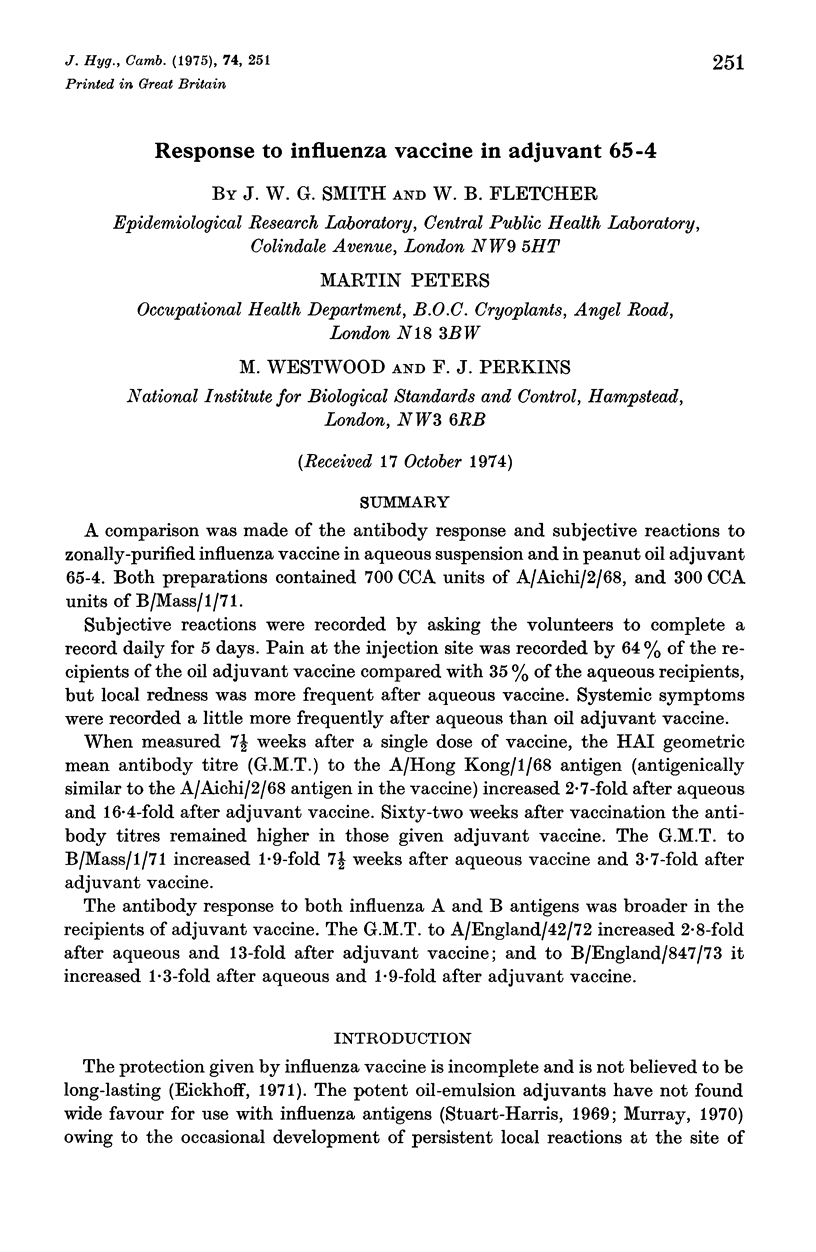
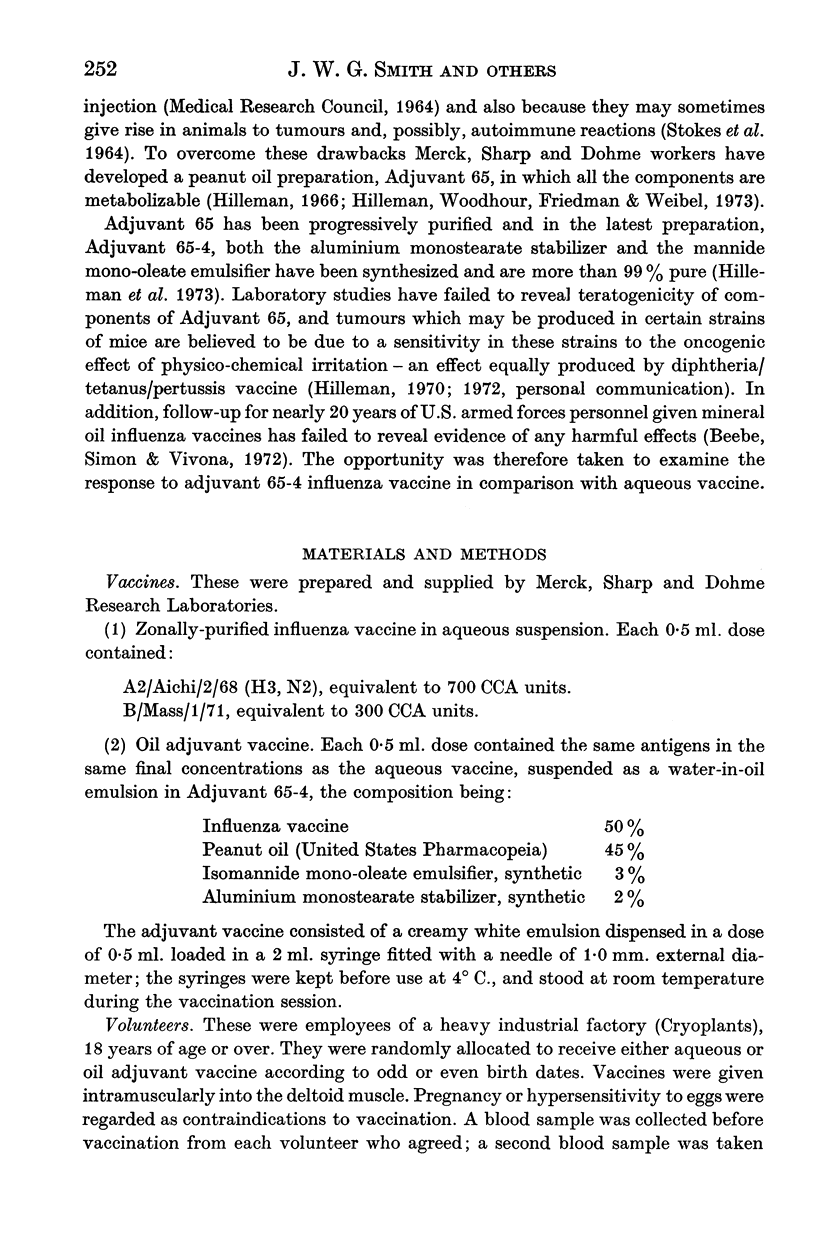
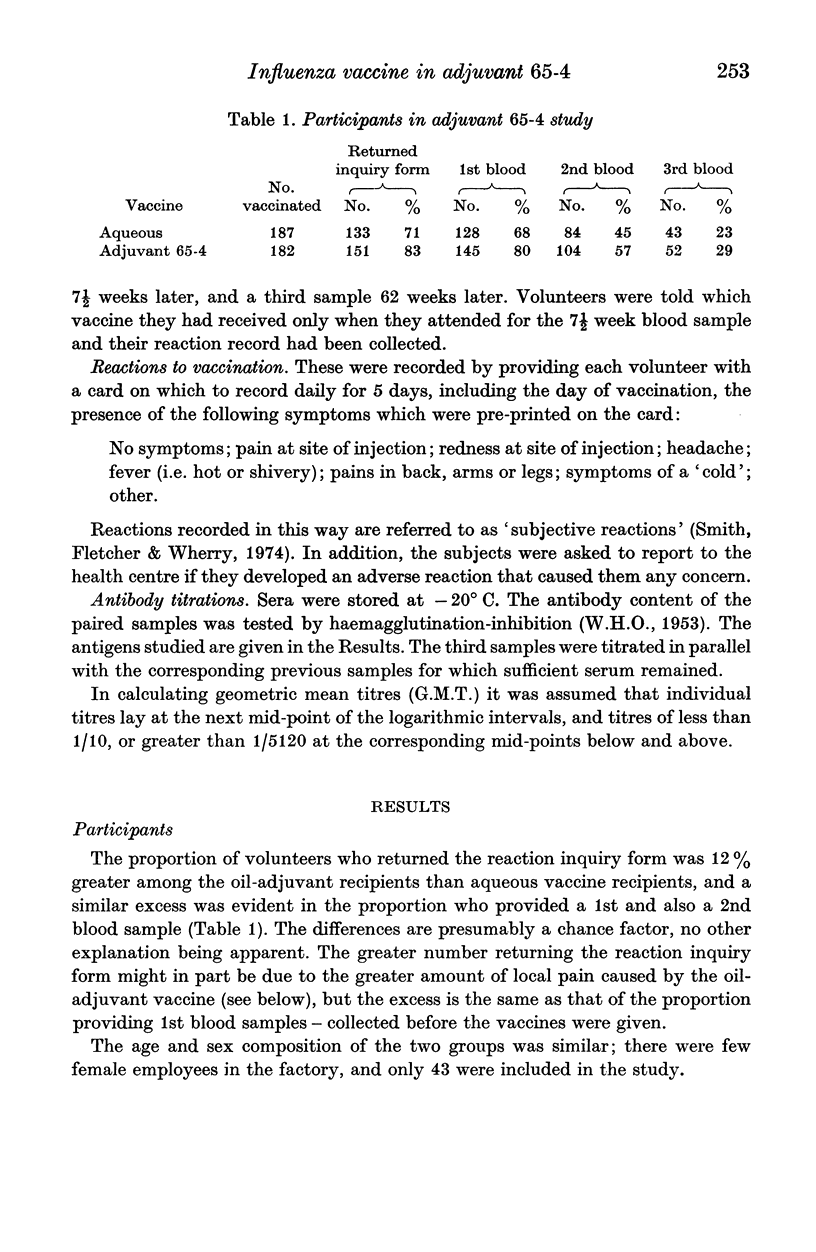
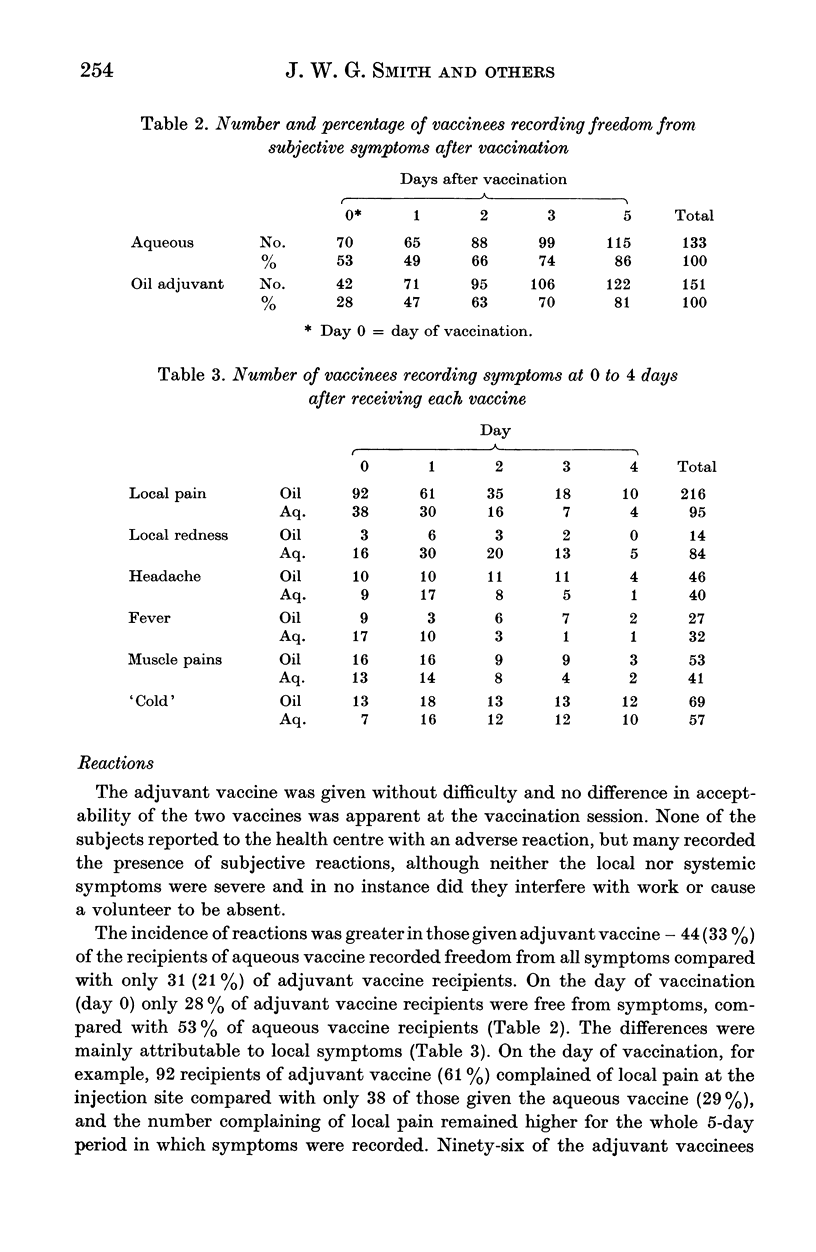

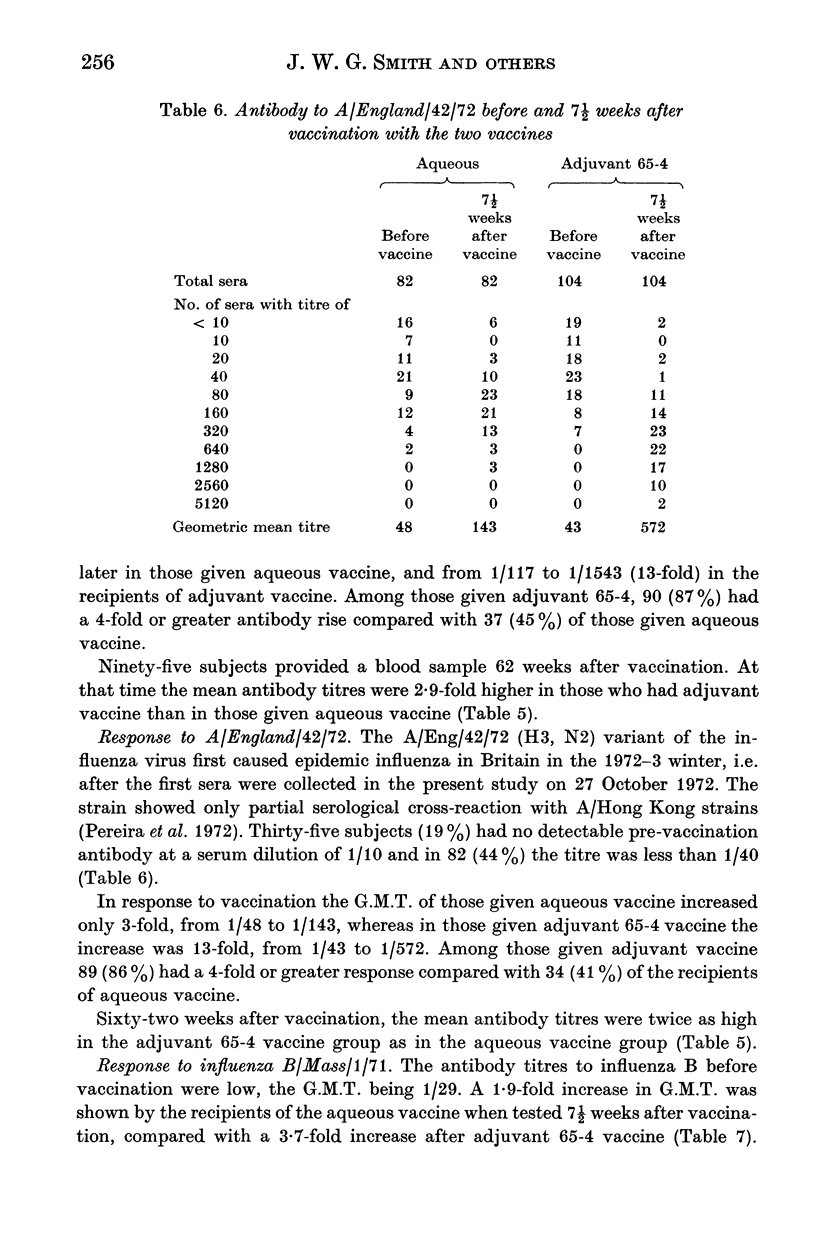

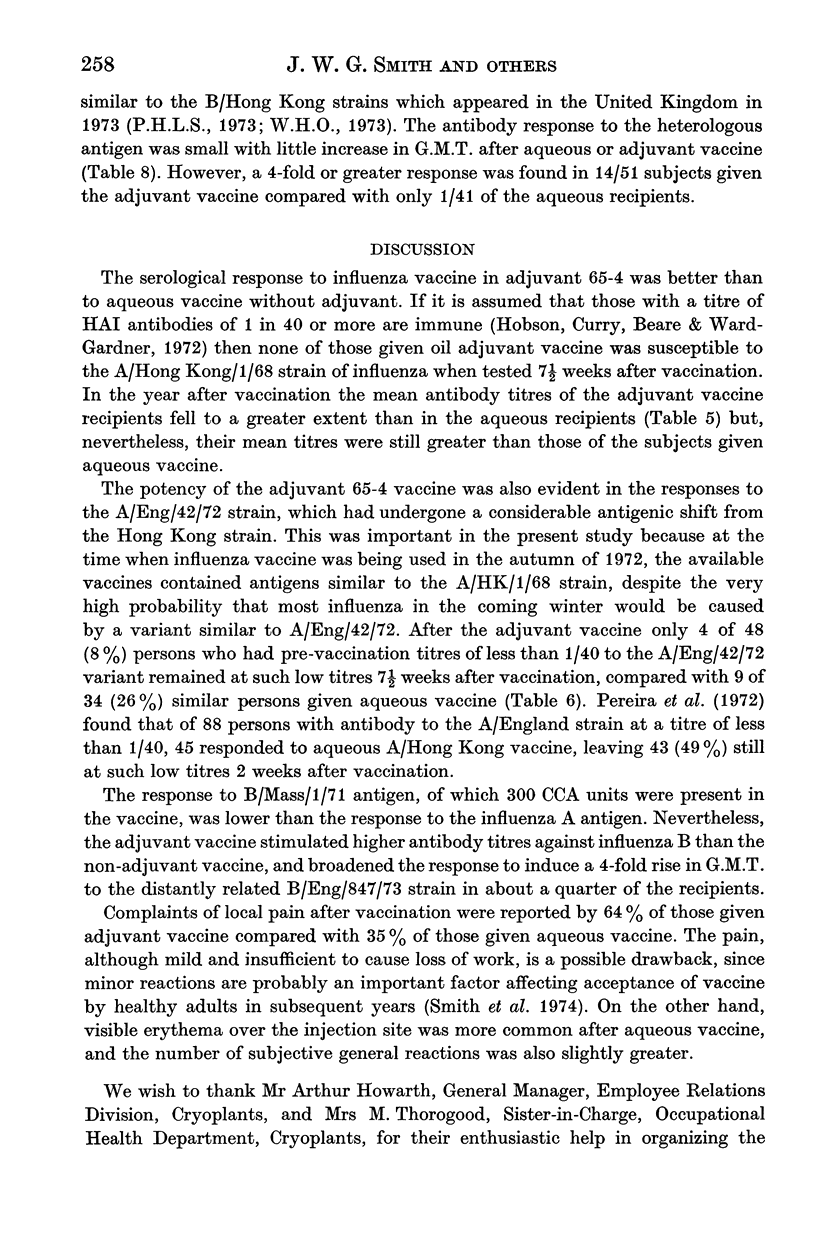
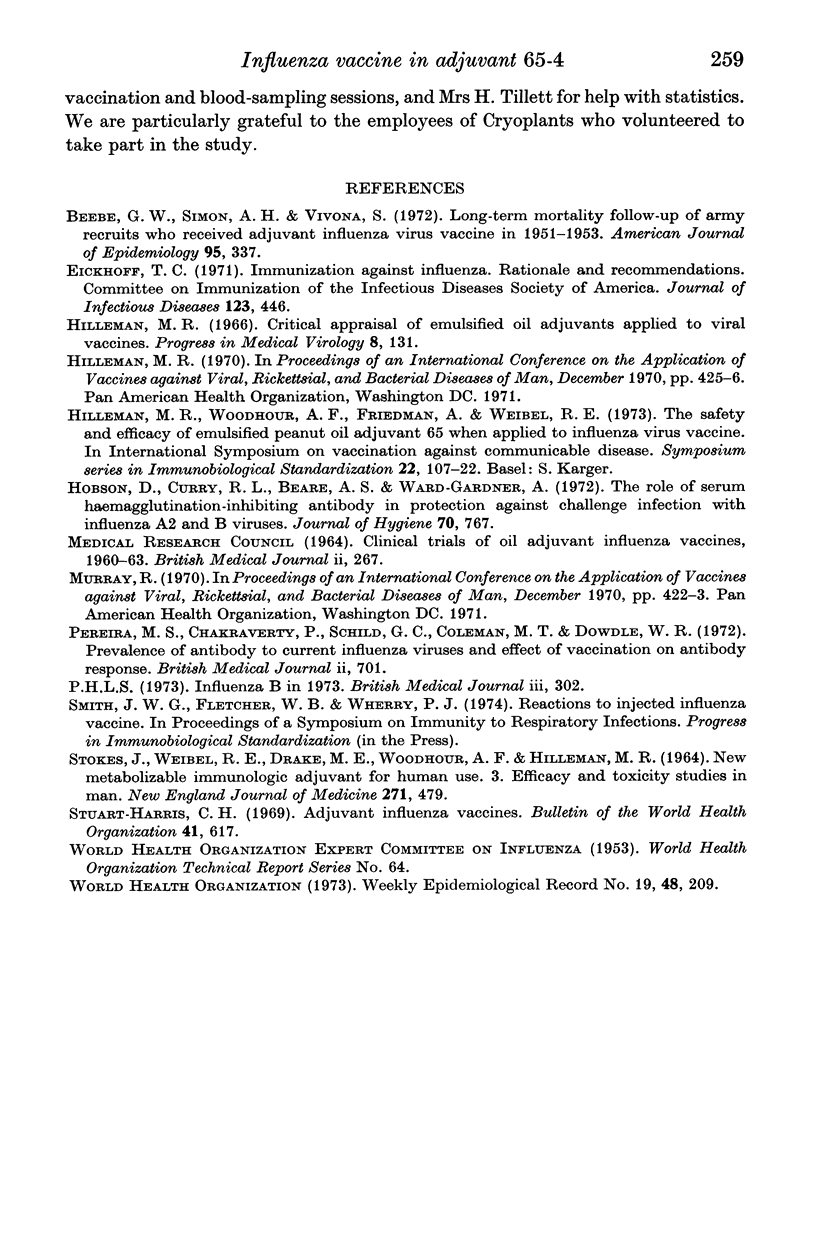
Selected References
These references are in PubMed. This may not be the complete list of references from this article.
- Beebe G. W., Simon A. H., Vivona S. Long-term mortality follow-up of Army recruits who received adjuvant influenza virus vaccine in 1951-1953. Am J Epidemiol. 1972 Apr;95(4):337–346. doi: 10.1093/oxfordjournals.aje.a121402. [DOI] [PubMed] [Google Scholar]
- Eickhoff T. C. Immunization against influenza: rationale and recommendations. J Infect Dis. 1971 Apr;123(4):446–454. doi: 10.1093/infdis/123.4.446. [DOI] [PubMed] [Google Scholar]
- Hilleman M. R. Critical appraisal of emulsified oil adjuvants applied to viral vaccines. Prog Med Virol. 1966;8:131–182. [PubMed] [Google Scholar]
- Hobson D., Curry R. L., Beare A. S., Ward-Gardner A. The role of serum haemagglutination-inhibiting antibody in protection against challenge infection with influenza A2 and B viruses. J Hyg (Lond) 1972 Dec;70(4):767–777. doi: 10.1017/s0022172400022610. [DOI] [PMC free article] [PubMed] [Google Scholar]
- Pereira M. S., Chakraverty P., Schild G. C., Coleman M. T., Dowdle W. R. Prevalence of antibody to current influenza viruses and effect of vaccination on antibody response. Br Med J. 1972 Dec 23;4(5842):701–703. doi: 10.1136/bmj.4.5842.701. [DOI] [PMC free article] [PubMed] [Google Scholar]
- STOKES J., Jr, WEIBEL R. E., DRAKE M. E., WOODHOUR A. F., HILLEMAN M. R. NEW METABOLIZABLE IMMUNOLOGIC ADJUVANT FOR HUMAN USE. 3. EFFICACY AND TOXICITY STUDIES IN MAN. N Engl J Med. 1964 Sep 3;271:479–487. doi: 10.1056/NEJM196409032711001. [DOI] [PubMed] [Google Scholar]
- Stuart-Harris C. H. Adjuvant influenza vaccines. Bull World Health Organ. 1969;41(3):617–621. [PMC free article] [PubMed] [Google Scholar]


